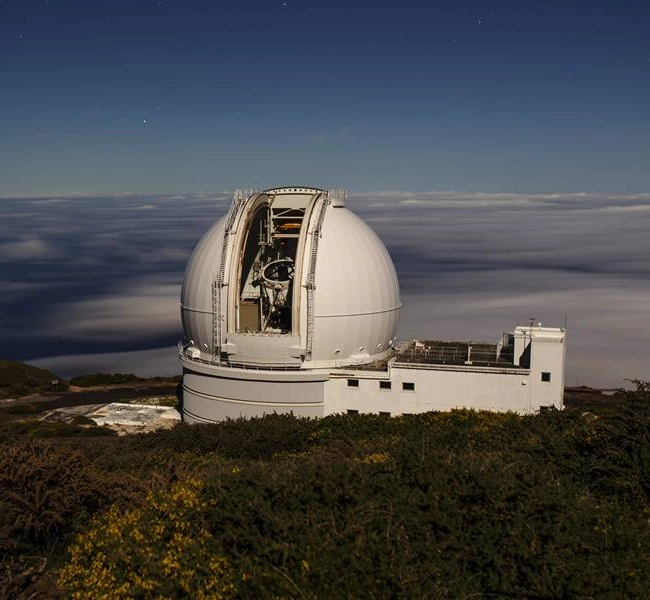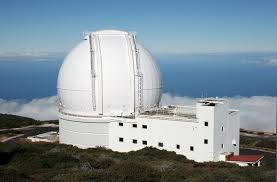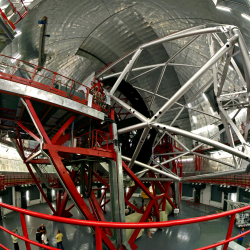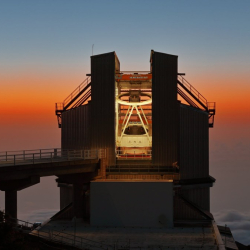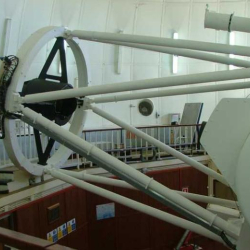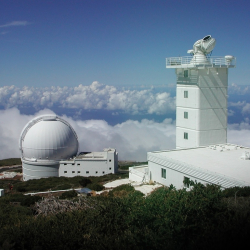William Herschel Telescope
Santa Cruz de Tenerife
Spain
At Roque de los Muchachos Observatory (ORM), on the rim of the Taburiente National Park, at 2396 metres above sea level in the municipality of Garafía (La Palma) stands one of the largest arrays of telescopes in the world.
Descripción
The William Herschel Telescope (WHT), with a 4.2-meter primary mirror, is one of the largest optical telescopes at the Roque de los Muchachos Observatory in La Palma, Spain. Opened in 1987 and operated by the Isaac Newton Group of Telescopes (ING), it has been a key instrument in numerous astronomical discoveries, covering a wide range of topics from exoplanet detection to galaxy formation studies.
The WHT is equipped with a variety of scientific instruments, including high-resolution spectrographs, wide-field cameras, and adaptive optics systems. These tools allow it to perform precise observations in both the optical and near-infrared ranges. This has enabled the telescope to contribute to cutting-edge research, such as the search for extrasolar planets and the study of supermassive black holes at the centers of distant galaxies.
In addition to its high-precision capabilities, the WHT has been part of major international collaborations, including research on dark matter and dark energy. These studies have been critical in advancing the understanding of how the universe is structured and evolves over time. The WHT’s contributions have been instrumental in gathering key data for these groundbreaking studies.
Over the years, the WHT has undergone several technological upgrades, ensuring it remains at the forefront of astronomical research. Its legacy in modern astronomy is undeniable, making it one of the most important telescopes for scientific exploration of the cosmos.
Datos técnicos del telescopio
- Optical System Type: Reflector or Newtonian Telescope
- Mount Type: Equatorial Mount
- Mount Movement Type: Computerized Mount


